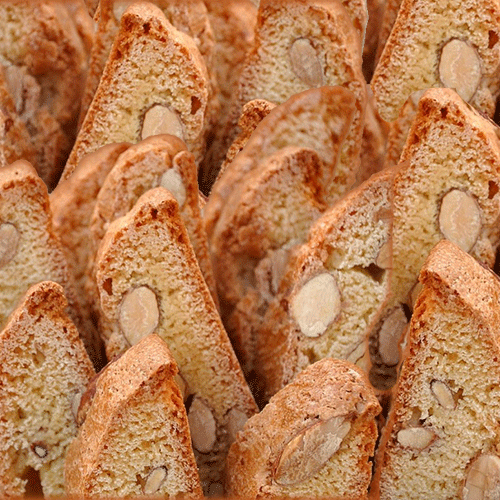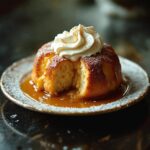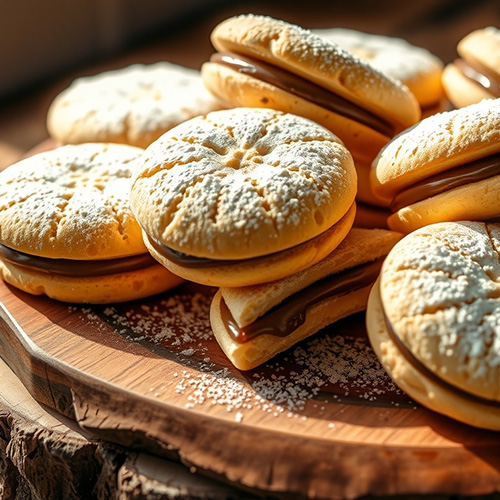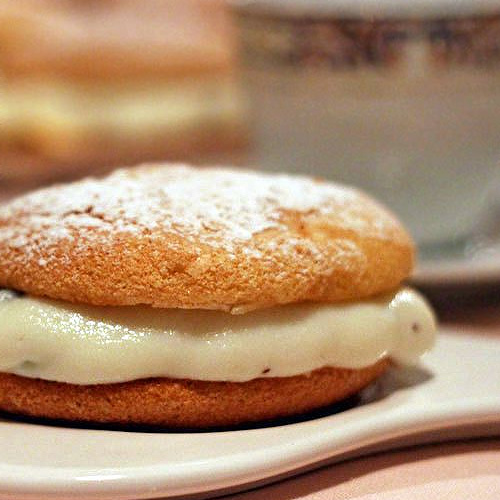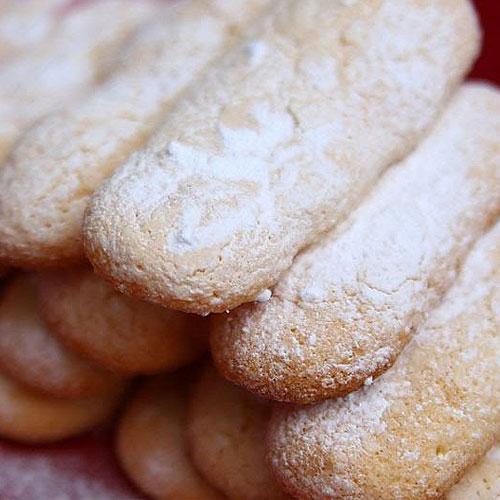Authentic Old School Biscotti
Old-school biscotti, also known as cantucci or biscotti di Prato, trace their roots back to medieval Prato, a historic city in Tuscany. Bakers in that era crafted these twice-baked cookies using just a few humble ingredients: flour, sugar, eggs, and almonds. With no added fat, the result was a dry, crunchy cookie designed for long shelf life—ideal for dipping into Vin Santo, Tuscany’s sweet dessert wine.
People traditionally baked biscotti in large batches for holidays and special gatherings, offering them as a symbol of hospitality and celebration. Over the centuries, different regions added their own twists, but classic cantucci have remained a beloved icon of Italy’s rustic baking traditions, valued for their simplicity, durability, and unforgettable crunch.
Cantucci deliver a golden, crisp bite with rich toasted almond flavor. Unlike modern, softer cookies, they skip the butter and oil completely. The dough brings together flour, sugar, whole almonds, and eggs—sometimes lifted with a touch of citrus zest. After the first bake, bakers slice the warm logs and return them to the oven, creating that signature twice-baked texture that stands up beautifully to a dunk in Vin Santo or a bold espresso.
Dip—don’t bite right away. In Tuscany, cantucci aren’t meant to be crunched dry. Locals soften them in a glass of Vin Santo, the region’s sweet dessert wine. No wine on hand? A hot espresso or cappuccino works just as well. It’s less about chewing, more about savoring.
Store Cantucci (Biscotti di Prato)
Cantucci are built to last that’s part of their old-world charm. Thanks to their dry, twice-baked texture, they keep beautifully for weeks if stored right.
Cool completely first: Before storing, let the biscotti cool fully. Any warmth will create steam and soften the crunch.
Airtight is key: Transfer your cantucci to an airtight container (a glass jar or tin works perfectly). This keeps out moisture and preserves that satisfying crispness.
Room temperature storage: Store them in a cool, dry spot—no fridge needed. Properly stored, they’ll stay fresh for up to 3–4 weeks.
Freeze for longer storage: Want to keep a batch on hand? Freeze them in a sealed container or freezer bag. Just let them come to room temp before serving—or reheat briefly in the oven to bring back the crunch.
Cantucci age well and travel even better, no wonder they’ve been a staple of Tuscan kitchens for centuries.

